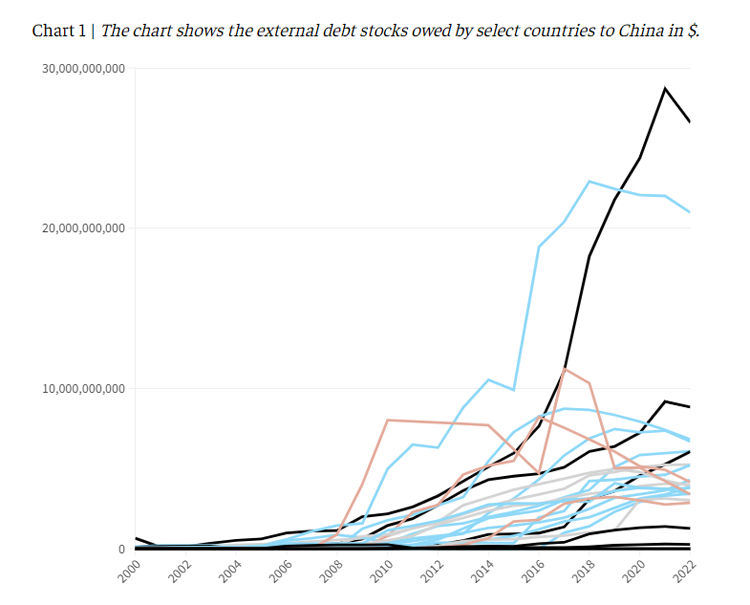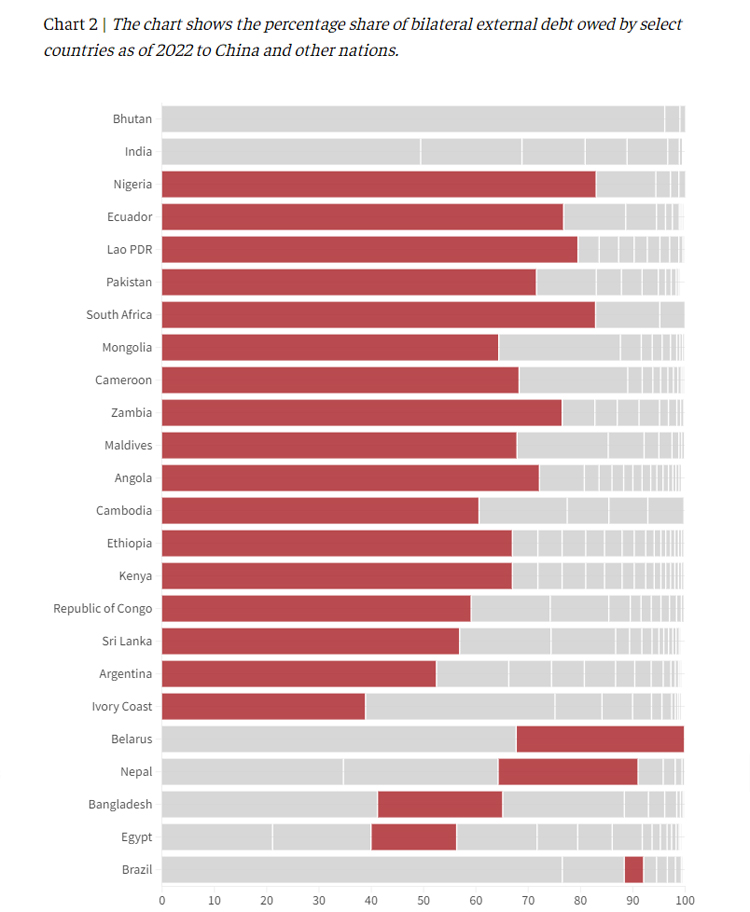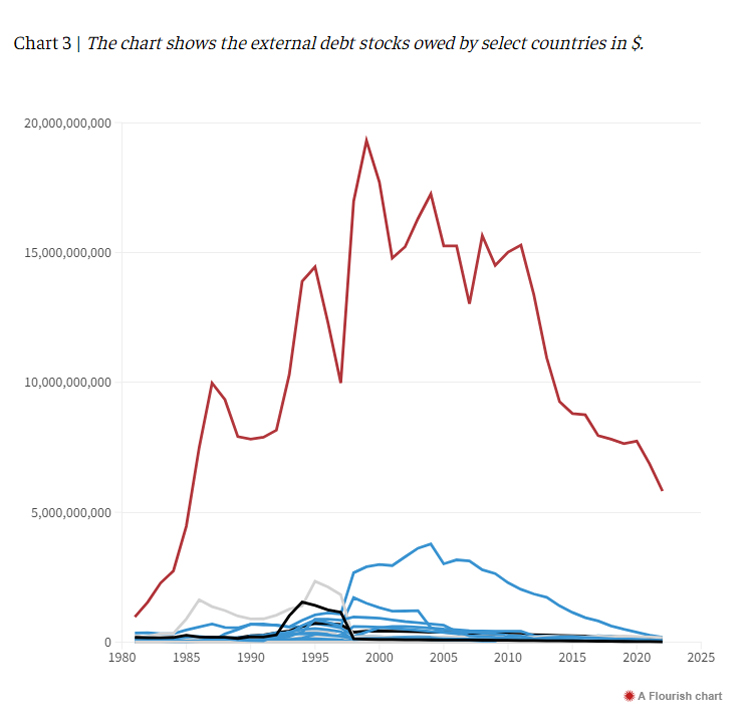May, 10, 2024

Debt owed by various countries, especially in South Asia and Africa, to China has multiplied in recent years. China is either the sole or the major lender for the majority of these countries. In other words, these nations owe a large share of their external debt only to China.

Only the top 20 countries that owe the most debt to China in absolute terms in 2022 are depicted. External debt stock is the debt owed by a country to non-residents repayable in currency, goods, or services. It is the sum of all public, publicly guaranteed, and private non-guaranteed long-term debt, and short term debts.
As can be seen from the chart, the debt owed by South Asian, African, and South American countries to China increased significantly post the 2010s. According to the World Bank’s latest International Debt Report 2023, this was due to China’s ‘Going Global Strategy’, which was initiated in 1999 to improve Chinese investment and lending abroad. By the end of 2022, low-and-middle-income countries owed China a total of $180 billion. In comparison, the low-and-middle-income countries’ total debt owed to the International Bank for Reconstruction and Development, a global development cooperative owned by 189 nations, was just a little higher at $223 billion.
Interestingly, China has given a big chunk of its new loans in recent years to neighbouring countries, while its loans to African and South American economies have fallen. As seen in Chart 1, Pakistan’s total external debt stocks owed to China rapidly surged from $7.6 billion in 2016 to $26.5 billion in 2022. In the same period, Sri Lanka’s total debt owed to China almost doubled from $4.6 billion to $8.8 billion. Bangladesh’s increased from $0.97 billion to $6 billion. Maldives’ increased from $0.3 billion to $1.2 billion. Nepal’s increased from $0.07 billion to $0.26 billion. Most of the debts owed to China are in the form of loans for infrastructure projects.
However, in recent years, China has cut back its overall lending due to two factors. According to the World Bank debt report, this is because China’s own economic position is not strong. And some of the countries it lent to are defaulting on their payments because the investments funded by China have not been financially successful.
After months of food and fuel shortage, Sri Lanka defaulted on foreign debt in 2022. According to a Reuters story, Sri Lanka’s interest payments will form nearly 54% of the country’s revenue this year, whereas Pakistan’s share is even higher at around 57%. Bangladesh’s interest payments will be 31.5% of its revenue. And most of these nations owe a large share of bilateral debt to China.

The list includes all the countries listed in Chart 1 and also other South Asian countries which don’t owe debt or owe little debt to China. Pakistan owes over 72% of its external bilateral debt to China. For Maldives, the figure is 68%; Sri Lanka’s is 57%, Nepal’s is 27%, and Bangladesh’s is 24%. Countries other than those in South Asia also owe a majority of their bilateral debt to China, with Japan, Germany and France being a distant second.

Notably, China too, during high levels of economic expansion in the 1990s and 2000s, increasingly accumulated foreign debt from countries such as Japan, Germany and France (Chart 3). But its external debt stocks have rapidly fallen in recent years due to repayments.
Rachita Rabboni is interning with The Hindu Data team
Source: World Bank’s International Debt Statistics (IDS)
- The Hindu
Video Story